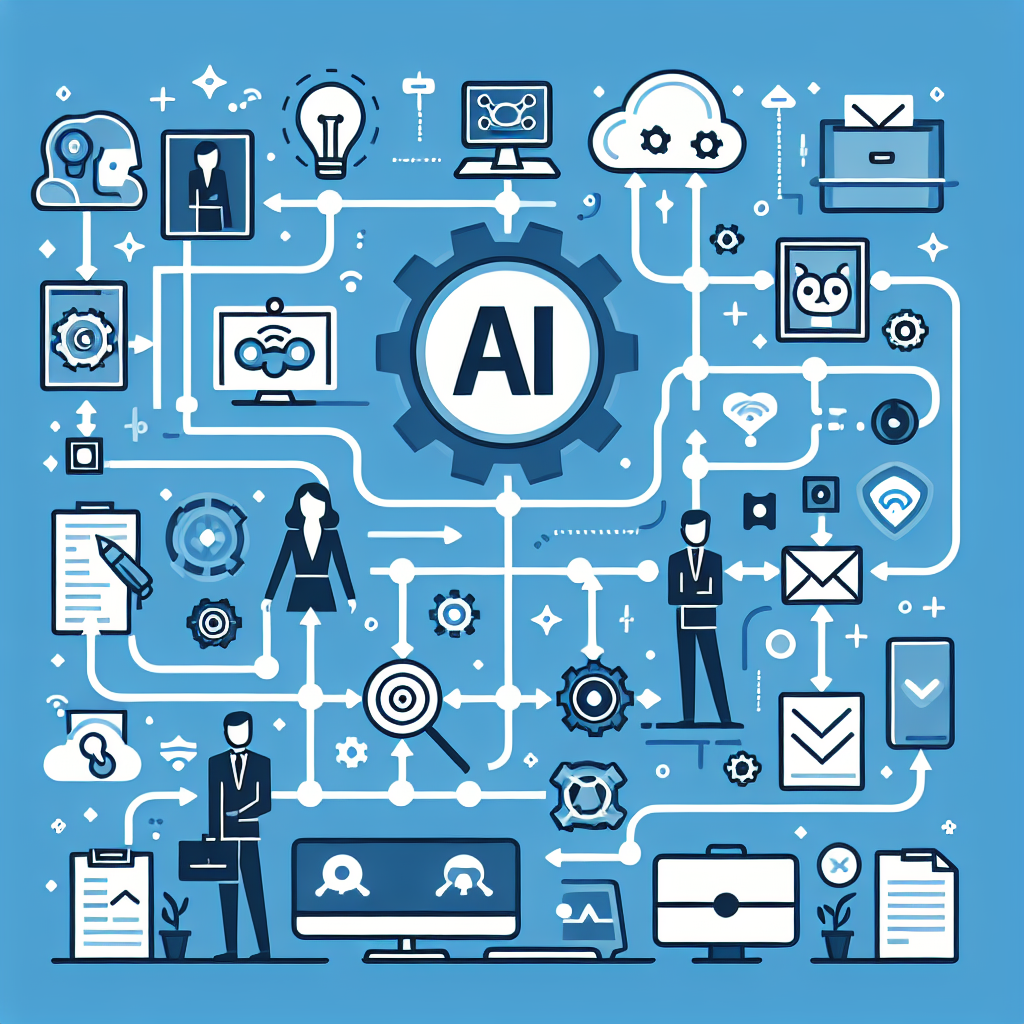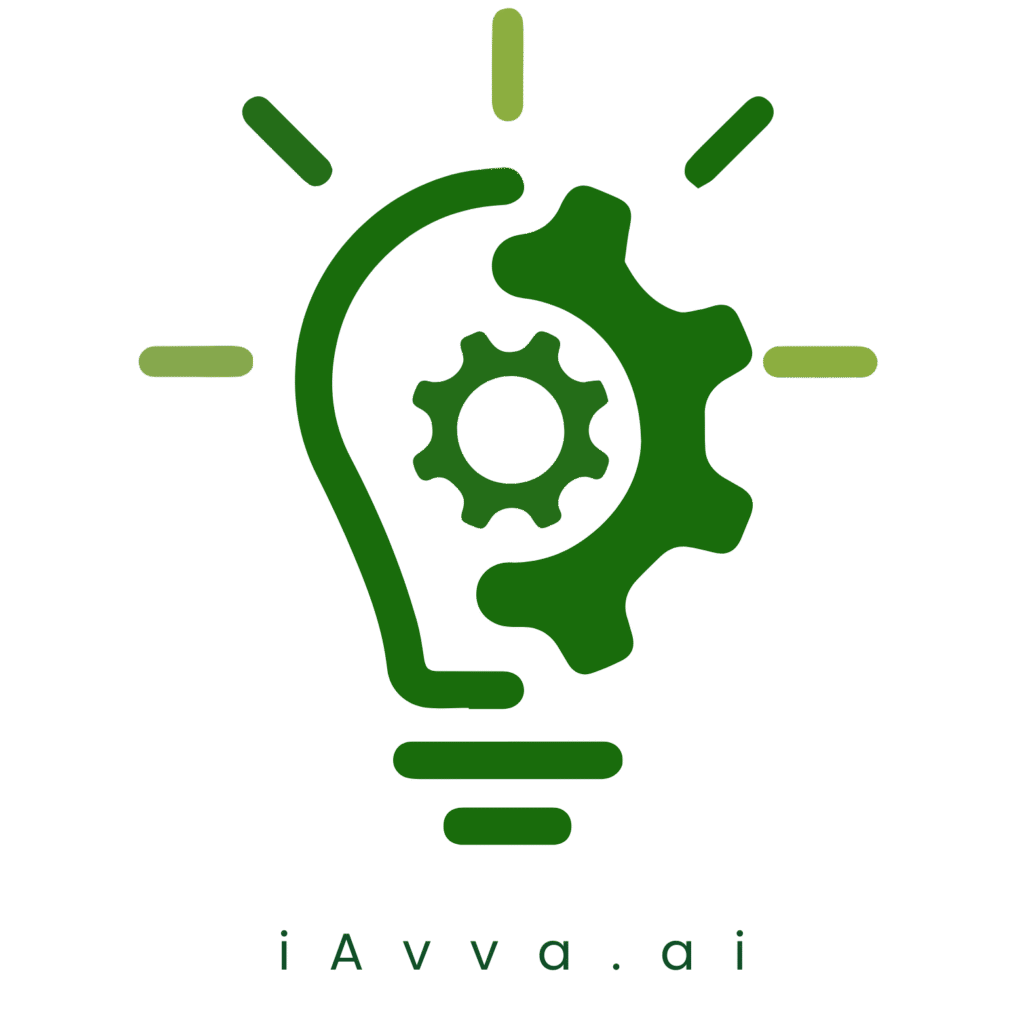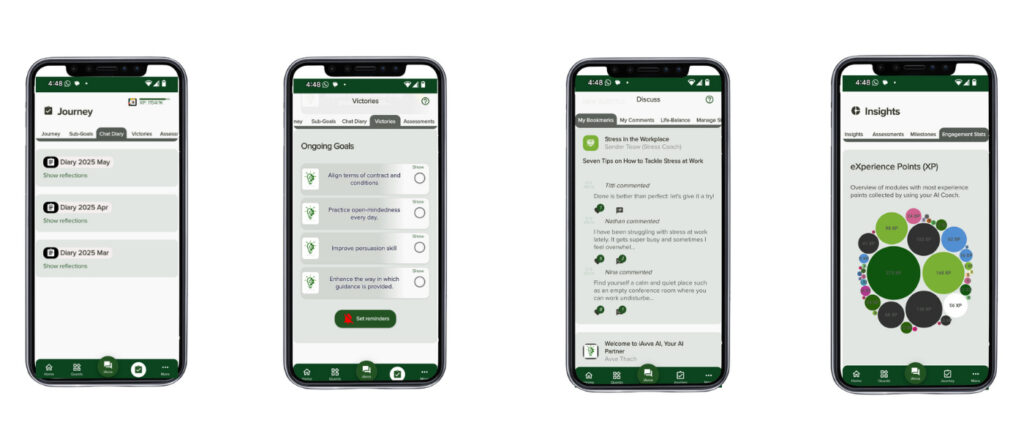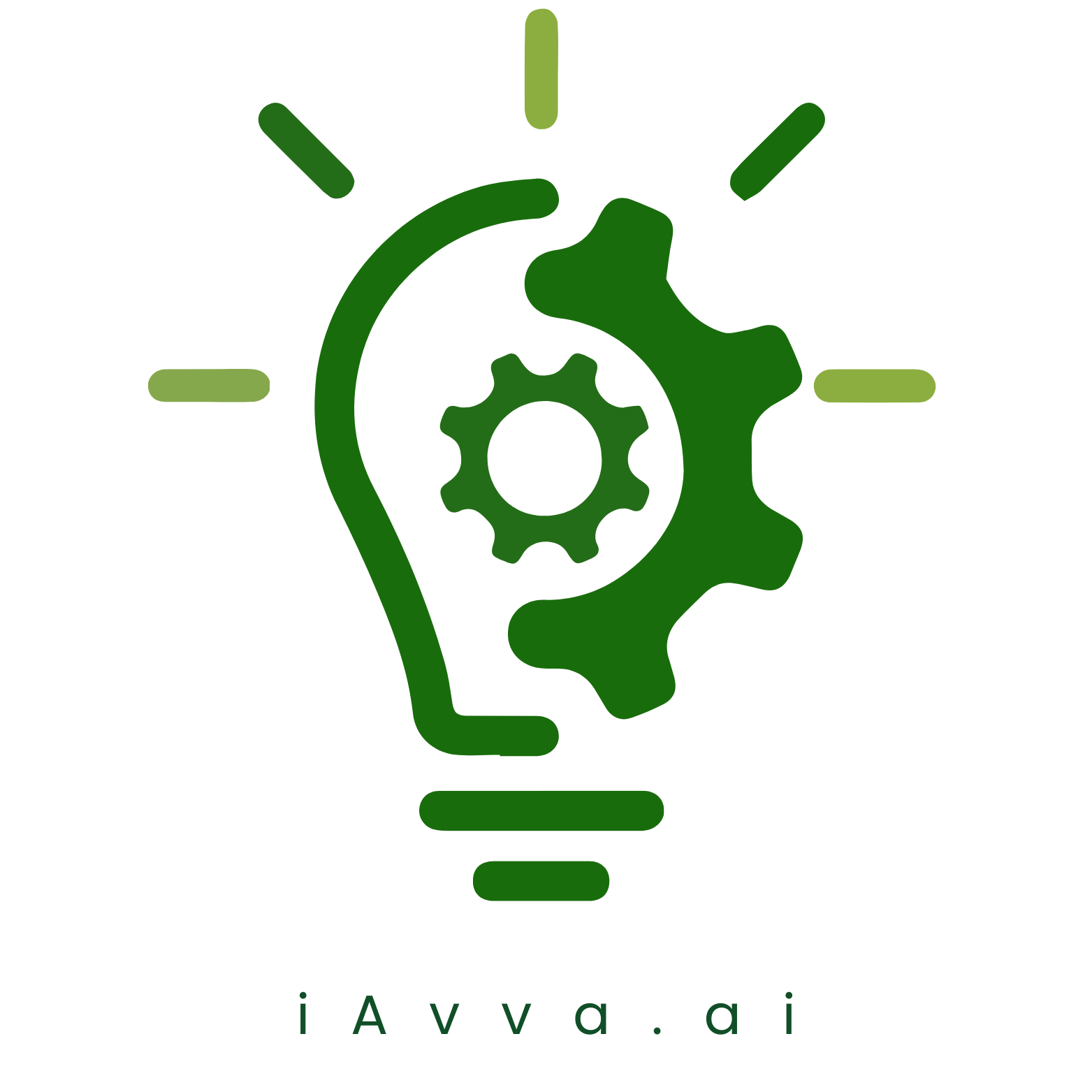Creating an Effective AI Implementation Plan: A Step-by-Step Guide
Introduction
Welcome to the era where artificial intelligence isn’t just a buzzword it’s a game changer! If you’re reading this, chances are you’re either curious about or tasked with creating an AI implementation plan that actually works. But fear not! This guide is here to help you navigate the labyrinth of AI deployment with ease and confidence.
Implementing AI solutions isn’t just about slapping some software together and calling it a day. Oh no, my friend! It’s about crafting a comprehensive AI integration roadmap that aligns with your business goals, engages your team, and optimizes operations. Think of it as building a bridge between your current capabilities and the futuristic world of AI-driven success.
In this guide, we’ll break down the essential steps for implementing AI solutions from defining your business objectives to monitoring progress like a hawk. Along the way, we’ll explore best practices for successful AI deployment strategies and highlight key considerations you should keep in mind.
Did you know? According to recent studies, 93% of companies are currently in the midst of digital transformation. If you’re not on board yet, it’s time to hop on the train!
So grab your favorite beverage, settle into your comfy chair, and let’s dive into the nitty-gritty of creating an effective AI implementation plan that will not only meet but exceed your expectations!

Understanding AI Implementation
Let’s kick things off by demystifying what an AI implementation plan really is. In a nutshell, it’s your roadmap for integrating artificial intelligence into your business operations. Think of it as a treasure map, guiding you through the jungle of technology adoption to reach the goldmine of efficiency and innovation.
Definition of AI Implementation
AI implementation refers to the process of integrating artificial intelligence solutions into existing systems and workflows. This can range from simple automation tasks to complex machine learning models that predict customer behavior. The goal? To enhance decision-making, optimize processes, and ultimately drive growth.
Importance of an AI Implementation Plan
Why should you bother crafting a detailed AI implementation plan? Well, without one, you’re essentially trying to build IKEA furniture without instructions frustrating and likely to end in tears. A well-structured plan helps:
- Align Business Goals: Ensure that your AI initiatives are directly tied to your company’s objectives.
- Reduce Risks: Identify potential pitfalls before they become major roadblocks.
- Optimize Resources: Allocate time, budget, and talent effectively.
- Measure Success: Establish clear metrics to evaluate the performance of your AI solutions.
Did You Know?
A staggering 93% of companies are currently navigating digital transformation efforts. Without a solid AI implementation plan, you may find yourself lost in the shuffle!
Overview of AI Adoption Frameworks
The landscape for implementing AI can be overwhelming, but fear not! There are established frameworks designed to simplify this journey. Here’s a quick rundown:
- The AI Adoption Framework: Focuses on identifying organizational readiness and scaling solutions effectively.
- The AI Integration Roadmap: Outlines steps for incorporating AI technologies into existing systems without disrupting operations.
- The Machine Learning Implementation Guide: Offers best practices for deploying machine learning algorithms tailored to specific business needs.
A clear understanding of these frameworks will help you avoid common missteps like jumping into deployment before assessing your current capabilities or failing to align with business goals. Remember: planning is half the battle!
Step 1: Define Business Goals and Objectives
Before you dive headfirst into the world of artificial intelligence, it’s crucial to take a step back and clarify your business goals and objectives. Think of this as laying the foundation for your AI implementation plan. Without a solid foundation, your AI deployment plan might crumble faster than a house of cards in a windstorm.
Aligning Business Goals with AI Strategy
The first order of business is ensuring that your AI strategy aligns with your broader business goals. This isn’t just about adding shiny new tech; it’s about leveraging AI to drive real results. Ask yourself:
- What specific problems are we trying to solve with AI?
- How can AI enhance our current operations or customer experience?
- Are there measurable outcomes we expect from this integration?
Identifying Key Performance Indicators (KPIs)
No one wants to shoot in the dark, right? Defining clear KPIs is like having a GPS for your journey into AI. These metrics will help you track progress and success. Consider:
- Efficiency Gains: How much time or resources are we saving?
- Customer Satisfaction: Are clients happier now that we’re using AI solutions?
- Revenue Growth: Is our bottom line positively impacted by our new initiatives?
Key Takeaway: Aligning your business objectives with an effective AI strategy not only sets clear expectations but also paves the way for successful deployment.
Engaging Stakeholders in Goal Setting
You can’t go it alone! Engaging stakeholders is essential for creating buy-in and ensuring all voices are heard. Collaborate with team members from various departments to gather insights and foster a sense of ownership over the project. This will not only enrich your planning process but also help in crafting an inclusive AI adoption framework.

This collaborative approach will lead to more innovative ideas while minimizing resistance during implementation. After all, no one likes being told what to do without having a say in it!
A Common Pitfall: Skipping This Step
Avoid the temptation to rush through this critical phase! Many organizations dive straight into technology selection without clearly defined goals, leading to wasted resources and disillusioned teams. Remember, an effective AI transformation plan starts with clarity.
The bottom line? Defining clear business goals and objectives is not just step one; it’s the bedrock upon which your entire AI journey will be built. So grab that metaphorical hard hat and get ready to construct something amazing!
Step 2: Assess Current Capabilities and Needs
Now that you’ve set your business goals, it’s time to take a good, hard look at where you currently stand. Think of this step as the health check-up for your AI implementation plan. You wouldn’t go on a road trip without checking the oil and tire pressure, right? The same goes for deploying AI solutions.
Evaluating Existing Technology Infrastructure
Your technology infrastructure is like the foundation of a house; if it’s shaky, everything else will wobble. Start by assessing:
- Hardware: Do you have the necessary servers and devices to support AI processing?
- Software: Are your current systems compatible with AI technologies?
- Data Management: Is your data clean, structured, and accessible for machine learning algorithms?
Identifying Skill Gaps and Training Needs
No matter how shiny your tech is, it’s only as good as the people using it. Here’s how to identify what skills your team might be missing:
- Current Skill Assessment: Evaluate existing skills against what’s needed for successful AI deployment.
- Training Programs: Consider workshops or online courses to bridge these gaps.
- Cultural Readiness: Is there an openness to learning and adapting among your team?
Conducting a SWOT Analysis for AI Readiness
A SWOT analysis can be incredibly revealing when planning for AI integration. Here’s what to focus on:
- Strengths: What advantages does your organization have that can facilitate AI adoption?
- Weaknesses: What internal challenges might hinder progress?
- Opportunities: Are there market trends or technologies you can capitalize on?
- Threats: What external factors could pose risks to your AI strategy?
The insights gathered from this step will inform the next phases of your journey developing that all-important AI integration roadmap. Remember, understanding where you are now is crucial before mapping out where you want to go!
Step 3: Develop the AI Integration Roadmap
Now that you’ve laid the groundwork with defined business goals and assessed your current capabilities, it’s time to roll up your sleeves and get into the nitty-gritty of creating an AI integration roadmap. Think of this roadmap as your GPS for navigating the complex terrain of AI implementation. Without it, you might find yourself lost in a maze of technologies and strategies.
Creating a Comprehensive AI Integration Plan
Your first task is to draft a comprehensive AI integration plan that aligns with your overall AI implementation plan. This document should outline:
- The specific AI solutions you plan to implement.
- The expected outcomes and how they tie back to your business objectives.
- A clear timeline for each phase of implementation.
Pacing the Implementation Phases: Short-term vs. Long-term Goals
Next, let’s talk about pacing. Implementing AI solutions is not a sprint; it’s more like a marathon with various checkpoints along the way. You’ll want to strike a balance between short-term wins and long-term goals:
- Short-term Goals: Focus on quick wins that demonstrate value like automating repetitive tasks or enhancing customer service with chatbots.
- Long-term Goals: Plan for more complex integrations, such as predictive analytics or machine learning models that evolve over time.
Selecting Appropriate AI Technologies and Tools
The next step is choosing the right tools for your journey. Not all AI technologies are created equal, so consider these key factors when selecting tools:
- Scalability: Ensure that the technology can grow with your needs.
- User-Friendliness: Look for intuitive interfaces to minimize training time.
- Integration Compatibility: Choose tools that play well with your existing systems to avoid tech headaches down the road.
Key Takeaway: A well-structured AI integration roadmap not only clarifies your strategy but also aligns it with business objectives, ensuring everyone is on the same page as you embark on this transformative journey.

Step 4: Design the AI Deployment Plan
Designing an effective AI deployment plan is like assembling a jigsaw puzzle. Each piece must fit perfectly to create a coherent picture of success. This step is crucial because it transforms your AI integration roadmap into actionable tasks, ensuring that your artificial intelligence strategy comes to life.
Establishing a Project Timeline and Milestones
A well-structured timeline is your best friend in this phase. Think of it as the GPS for your AI implementation plan. Without it, you might find yourself lost in the maze of deadlines and deliverables. Here’s how to get started:
- Break Down Tasks: Divide the overall project into manageable chunks. Each chunk should have clear objectives and deadlines.
- Set Milestones: Identify key milestones along the way these are your checkpoints for assessing progress and making adjustments as needed.
- Use Gantt Charts: Visual tools like Gantt charts can help you map out tasks against time, providing a clear view of what needs to be done when.
Resource Allocation for Successful Deployment
No great plan survives contact with reality without proper resources. This means not just financial resources but also human capital and technology:
- Identify Key Roles: Determine who will be responsible for what within your team. Clearly defined roles lead to accountability.
- Budge Allocation: Ensure that your budget reflects the needs of each phase of deployment from technology acquisition to training personnel.
- Monitor Resource Use: Regularly review resource allocation to avoid bottlenecks or underutilization as the project progresses.
Crisis Management and Contingency Planning in AI Projects
No one likes to think about crises, but having a contingency plan is essential for any AI transformation plan. Here are some strategies to consider:
- Acknowledge Potential Risks: List out potential risks such as data breaches, system failures, or resistance from staff.
- Create Response Plans: For each identified risk, outline specific actions that can be taken to mitigate impacts if they occur.
- Regularly Update Plans: As your project evolves, revisit these plans to ensure they remain relevant and effective.
Your AI deployment plan should be dynamic ready to adapt as new challenges arise or as feedback rolls in from initial implementations. By designing a robust deployment strategy, you’re not just planning for success; you’re paving the way for sustainable growth through effective AI integration!
Step 5: Execute the AI Strategy and Monitor Progress
Now that you’ve crafted a stellar AI implementation plan, it’s time to roll up your sleeves and dive into execution! This step is where all the planning pays off, and your dreams of an AI-enhanced organization start to materialize. But hold on execution isn’t just a one-and-done deal; it requires ongoing monitoring and adjustments to ensure you’re on the right track.
Implementing the AI Solutions Effectively
First things first: you need to ensure that your AI solutions are implemented effectively. This means not just plugging in some fancy technology but aligning it with your business processes. Here are some strategies to consider:
- Start Small: Begin with a pilot project that allows you to test the waters without diving headfirst into the deep end.
- Engage Your Team: Involve key team members from different departments in the implementation process. Their insights can help tailor solutions to fit your unique needs.
- Utilize Agile Methodologies: Implement in iterative cycles, allowing for quick adjustments based on real-time feedback.
Continuous Monitoring and Evaluation of KPIs
Your AI deployment plan should include mechanisms for continuous monitoring. Think of it like checking your car’s engine light if something’s off, you want to know before it breaks down! Here’s how:
- Define Clear KPIs: Establish Key Performance Indicators that reflect both operational success and strategic goals.
- Use Dashboards: Create visual dashboards that provide real-time insights into performance metrics, making it easier for stakeholders to stay informed.
- Scheduled Reviews: Conduct regular check-ins (monthly or quarterly) to assess progress against your KPIs and adjust strategies as necessary.
Tweaking Strategies Based on Feedback and Results
The beauty of an effective AI execution strategy lies in its flexibility. Be prepared to pivot based on what the data tells you. Here are some tips for making those tweaks:
- A/B Testing: Continuously test different approaches or features within your AI systems to see what resonates best with users.
- User Feedback Loops: Collect feedback from end-users regularly. Their experiences can guide improvements and enhancements.
- Cultural Adaptation: Ensure that changes align with company culture. Sometimes, technology adoption stumbles because people aren’t ready for change!

Your journey doesn’t end here! The ongoing cycle of implementing, monitoring, evaluating, and tweaking is crucial for optimizing business processes with your new AI solutions. So stay curious, be adaptable, and keep pushing towards those ambitious goals outlined in your initial plan!
Best Practices for Successful AI Implementation
Implementing an AI implementation plan is like preparing a gourmet meal: it requires the right ingredients, a solid recipe, and a dash of creativity. Here are some best practices to ensure your AI deployment plan is not just edible but delectable!
Cultivating a Culture of Innovation and Adaptability within Teams
First things first, fostering an environment where innovation flourishes is crucial. Encourage your team to think outside the box and embrace change. Remember:
- Empower Employees: Give them the freedom to experiment with AI tools.
- Celebrate Failures: Every misstep is a stepping stone toward success.
- Create Cross-Functional Teams: Diverse perspectives can spark groundbreaking ideas.
The Role of Leadership in Driving AI Adoption Efforts
Your leaders are the captains steering this ship through uncharted waters. Their commitment to an effective AI transformation plan can make or break your implementation efforts. Here’s how they can lead the charge:
- Lead by Example: When leadership embraces AI, it sets a tone that resonates throughout the organization.
- Communicate Clearly: Transparency about goals and expectations keeps everyone on the same page.
- Invest in Training: Equip teams with the knowledge they need to harness AI effectively.
Key Point: Successful AI deployment strategies hinge on both cultural readiness and strong leadership support!
Avoiding Common Pitfalls in AI Implementation
No one wants to step into a bear trap while navigating their AI integration roadmap! Here are some common misconceptions and mistakes to steer clear of:
- Lack of Clear Objectives: Without defined goals, your project may drift aimlessly.
- Poor Data Management: Garbage in, garbage out ensure your data is clean and accurate!
- Ineffective Change Management: Resistance from teams can derail even the best-laid plans; address concerns proactively.
The road to implementing AI solutions may be bumpy, but with these best practices in mind, you’ll be well-equipped to navigate it successfully. So roll up those sleeves and get ready for an exciting journey into the world of artificial intelligence!
The Future of Your Business with Effective AI Implementation Plans
Picture this: your business is a ship sailing through the tumultuous waters of today’s digital landscape. The winds of change are strong, and the waves of competition are relentless. How do you ensure that your vessel not only stays afloat but also navigates toward success? The answer lies in a robust AI implementation plan.
As we look toward the future, effective AI implementation plans will be the compass guiding businesses through uncharted territories. With an artificial intelligence strategy that aligns seamlessly with your organizational goals, you’re not just keeping up; you’re setting the pace.
Why an AI Implementation Plan is Essential
Think of your AI implementation plan as a treasure map. Without it, you might find yourself lost in a sea of data and technology options. Here’s why crafting a solid plan is non-negotiable:
- Clarity and Focus: A well-defined AI integration roadmap helps you concentrate resources on high-impact projects.
- Risk Mitigation: Planning for potential pitfalls means you’re prepared for crises before they hit like having a life jacket ready when you hit rough seas.
- Measurable Outcomes: With clear KPIs outlined in your AI deployment plan, you can track progress and pivot strategies effectively.
The Role of Leadership in Shaping Your AI Future
Your leadership team plays a pivotal role in steering the ship. They need to champion the AI transformation plan, ensuring that everyone on deck understands how to leverage these new tools effectively. This means:
- Cultivating Buy-In: Engage all stakeholders early on to foster enthusiasm and commitment towards implementing AI solutions.
- Nurturing Talent: Investing in training programs ensures that your team has the skills necessary to utilize these technologies think of it as upgrading your crew’s navigation skills.
- Emphasizing Continuous Improvement: An effective AI operational plan isn’t static; it evolves based on insights gained from ongoing monitoring and evaluation.
A Look Ahead: Trends Shaping AI Implementation Plans
The landscape of artificial intelligence is shifting rapidly, with several trends emerging that will impact how businesses design their implementation strategies:
- Personalization at Scale: Companies are increasingly using machine learning algorithms to tailor experiences for individual customers imagine serving each diner at a restaurant their favorite dish without them even asking!
- Sustainability Focus: More organizations are integrating sustainability into their AI strategies, ensuring that their technological advancements do not come at the expense of our planet.
- Cross-Functional Collaboration: Breaking down silos within organizations will become essential for maximizing the benefits of AI across different departments it’s about teamwork making the dream work!
The future is bright for those who embrace effective AI implementation plans. By aligning your business goals with strategic deployment frameworks, you can optimize processes and drive growth like never before. So grab that treasure map and set sail toward success!
Conclusion
As we wrap up our journey through the intricate landscape of creating an effective AI implementation plan, it’s clear that success hinges on strategic foresight and meticulous execution. An artificial intelligence strategy is not just about technology; it’s about aligning your business goals with a comprehensive AI integration roadmap to ensure that every step you take is purposeful and measurable.
Remember, the steps for implementing AI are not merely checkboxes to tick off. Each phase from defining your objectives to executing your AI deployment plan is an opportunity to refine and adapt your approach. This iterative process is essential for navigating the complexities of AI adoption and ensuring that your organization remains agile in a rapidly evolving landscape.
Key Takeaway: A well-crafted AI execution strategy should be flexible enough to evolve based on ongoing feedback and performance metrics. Don’t be afraid to pivot when necessary!
A common misconception is that once the technology is in place, the job is done; however, true success lies in continuous improvement and alignment with business objectives. Whether you’re enhancing operational efficiency or driving innovation, keep your focus on optimizing business processes with your AI implementation plan.
As you embark on this transformative journey, consider leveraging resources like a detailed machine learning implementation guide or working with experts who can help you navigate the nuances of AI system implementation. By doing so, you’re not just implementing AI solutions; you’re setting the stage for a future where technology and human ingenuity work hand in hand.
Your next step? Start drafting your own comprehensive AI transformation plan today! With the right guidance and a clear roadmap, you’ll be well-equipped to make informed decisions that drive sustainable growth.
An AI implementation plan is a roadmap for integrating artificial intelligence into business operations. It guides through technology adoption to enhance decision-making, optimize processes, and drive growth.
” } }, { “@type”: “Question”, “name”: “Why is a detailed AI implementation plan important?”, “acceptedAnswer”: { “@type”: “Answer”, “text”: “
A detailed plan helps align business goals with AI initiatives, reduce risks, optimize resources, and measure success effectively.
” } }, { “@type”: “Question”, “name”: “How can businesses ensure successful AI deployment?”, “acceptedAnswer”: { “@type”: “Answer”, “text”: “
Businesses can ensure success by defining clear objectives, engaging stakeholders, evaluating current capabilities, developing an integration roadmap, and continuously monitoring progress.
” } } ] }, { “@type”: [“SpeakableSpecification”], “@id”:”#speakable1″, “_speakableContent”:[ “#Creating an Effective AI Implementation Plan: A Step-by-Step Guide” ], “_cssSelector”:[ “#main-content h1” ] } ] }



















Leave a Reply